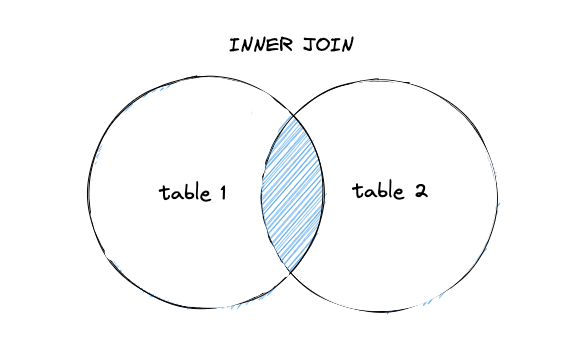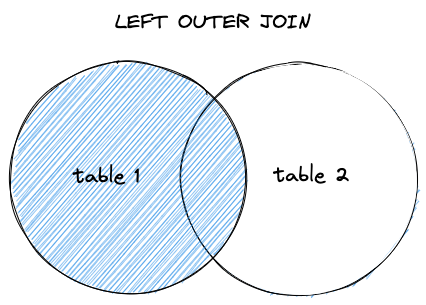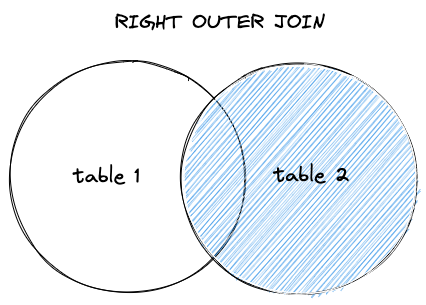- Docs Home
- About TiDB
- Quick Start
- Develop
- Overview
- Quick Start
- Build a TiDB Cluster in TiDB Cloud (Developer Tier)
- CRUD SQL in TiDB
- Build a Simple CRUD App with TiDB
- Example Applications
- Connect to TiDB
- Design Database Schema
- Write Data
- Read Data
- Transaction
- Optimize
- Troubleshoot
- Reference
- Cloud Native Development Environment
- Third-party Support
- Deploy
- Software and Hardware Requirements
- Environment Configuration Checklist
- Plan Cluster Topology
- Install and Start
- Verify Cluster Status
- Test Cluster Performance
- Migrate
- Overview
- Migration Tools
- Migration Scenarios
- Migrate from Aurora
- Migrate MySQL of Small Datasets
- Migrate MySQL of Large Datasets
- Migrate and Merge MySQL Shards of Small Datasets
- Migrate and Merge MySQL Shards of Large Datasets
- Migrate from CSV Files
- Migrate from SQL Files
- Migrate from One TiDB Cluster to Another TiDB Cluster
- Migrate from TiDB to MySQL-compatible Databases
- Advanced Migration
- Integrate
- Maintain
- Monitor and Alert
- Troubleshoot
- TiDB Troubleshooting Map
- Identify Slow Queries
- Analyze Slow Queries
- SQL Diagnostics
- Identify Expensive Queries Using Top SQL
- Identify Expensive Queries Using Logs
- Statement Summary Tables
- Troubleshoot Hotspot Issues
- Troubleshoot Increased Read and Write Latency
- Save and Restore the On-Site Information of a Cluster
- Troubleshoot Cluster Setup
- Troubleshoot High Disk I/O Usage
- Troubleshoot Lock Conflicts
- Troubleshoot TiFlash
- Troubleshoot Write Conflicts in Optimistic Transactions
- Troubleshoot Inconsistency Between Data and Indexes
- Performance Tuning
- Tuning Guide
- Configuration Tuning
- System Tuning
- Software Tuning
- SQL Tuning
- Overview
- Understanding the Query Execution Plan
- SQL Optimization Process
- Overview
- Logic Optimization
- Physical Optimization
- Prepare Execution Plan Cache
- Control Execution Plans
- Tutorials
- TiDB Tools
- Overview
- Use Cases
- Download
- TiUP
- Documentation Map
- Overview
- Terminology and Concepts
- Manage TiUP Components
- FAQ
- Troubleshooting Guide
- Command Reference
- Overview
- TiUP Commands
- TiUP Cluster Commands
- Overview
- tiup cluster audit
- tiup cluster check
- tiup cluster clean
- tiup cluster deploy
- tiup cluster destroy
- tiup cluster disable
- tiup cluster display
- tiup cluster edit-config
- tiup cluster enable
- tiup cluster help
- tiup cluster import
- tiup cluster list
- tiup cluster patch
- tiup cluster prune
- tiup cluster reload
- tiup cluster rename
- tiup cluster replay
- tiup cluster restart
- tiup cluster scale-in
- tiup cluster scale-out
- tiup cluster start
- tiup cluster stop
- tiup cluster template
- tiup cluster upgrade
- TiUP DM Commands
- Overview
- tiup dm audit
- tiup dm deploy
- tiup dm destroy
- tiup dm disable
- tiup dm display
- tiup dm edit-config
- tiup dm enable
- tiup dm help
- tiup dm import
- tiup dm list
- tiup dm patch
- tiup dm prune
- tiup dm reload
- tiup dm replay
- tiup dm restart
- tiup dm scale-in
- tiup dm scale-out
- tiup dm start
- tiup dm stop
- tiup dm template
- tiup dm upgrade
- TiDB Cluster Topology Reference
- DM Cluster Topology Reference
- Mirror Reference Guide
- TiUP Components
- PingCAP Clinic Diagnostic Service
- TiDB Operator
- Dumpling
- TiDB Lightning
- TiDB Data Migration
- About TiDB Data Migration
- Architecture
- Quick Start
- Deploy a DM cluster
- Tutorials
- Advanced Tutorials
- Maintain
- Cluster Upgrade
- Tools
- Performance Tuning
- Manage Data Sources
- Manage Tasks
- Export and Import Data Sources and Task Configurations of Clusters
- Handle Alerts
- Daily Check
- Reference
- Architecture
- Command Line
- Configuration Files
- OpenAPI
- Compatibility Catalog
- Secure
- Monitoring and Alerts
- Error Codes
- Glossary
- Example
- Troubleshoot
- Release Notes
- Backup & Restore (BR)
- TiDB Binlog
- TiCDC
- Dumpling
- sync-diff-inspector
- TiSpark
- Reference
- Cluster Architecture
- Key Monitoring Metrics
- Secure
- Privileges
- SQL
- SQL Language Structure and Syntax
- SQL Statements
ADD COLUMNADD INDEXADMINADMIN CANCEL DDLADMIN CHECKSUM TABLEADMIN CHECK [TABLE|INDEX]ADMIN SHOW DDL [JOBS|QUERIES]ADMIN SHOW TELEMETRYALTER DATABASEALTER INDEXALTER INSTANCEALTER PLACEMENT POLICYALTER TABLEALTER TABLE COMPACTALTER USERANALYZE TABLEBACKUPBATCHBEGINCHANGE COLUMNCOMMITCHANGE DRAINERCHANGE PUMPCREATE [GLOBAL|SESSION] BINDINGCREATE DATABASECREATE INDEXCREATE PLACEMENT POLICYCREATE ROLECREATE SEQUENCECREATE TABLE LIKECREATE TABLECREATE USERCREATE VIEWDEALLOCATEDELETEDESCDESCRIBEDODROP [GLOBAL|SESSION] BINDINGDROP COLUMNDROP DATABASEDROP INDEXDROP PLACEMENT POLICYDROP ROLEDROP SEQUENCEDROP STATSDROP TABLEDROP USERDROP VIEWEXECUTEEXPLAIN ANALYZEEXPLAINFLASHBACK TABLEFLUSH PRIVILEGESFLUSH STATUSFLUSH TABLESGRANT <privileges>GRANT <role>INSERTKILL [TIDB]LOAD DATALOAD STATSMODIFY COLUMNPREPARERECOVER TABLERENAME INDEXRENAME TABLEREPLACERESTOREREVOKE <privileges>REVOKE <role>ROLLBACKSELECTSET DEFAULT ROLESET [NAMES|CHARACTER SET]SET PASSWORDSET ROLESET TRANSACTIONSET [GLOBAL|SESSION] <variable>SHOW ANALYZE STATUSSHOW [BACKUPS|RESTORES]SHOW [GLOBAL|SESSION] BINDINGSSHOW BUILTINSSHOW CHARACTER SETSHOW COLLATIONSHOW [FULL] COLUMNS FROMSHOW CONFIGSHOW CREATE PLACEMENT POLICYSHOW CREATE SEQUENCESHOW CREATE TABLESHOW CREATE USERSHOW DATABASESSHOW DRAINER STATUSSHOW ENGINESSHOW ERRORSSHOW [FULL] FIELDS FROMSHOW GRANTSSHOW INDEX [FROM|IN]SHOW INDEXES [FROM|IN]SHOW KEYS [FROM|IN]SHOW MASTER STATUSSHOW PLACEMENTSHOW PLACEMENT FORSHOW PLACEMENT LABELSSHOW PLUGINSSHOW PRIVILEGESSHOW [FULL] PROCESSSLISTSHOW PROFILESSHOW PUMP STATUSSHOW SCHEMASSHOW STATS_HEALTHYSHOW STATS_HISTOGRAMSSHOW STATS_METASHOW STATUSSHOW TABLE NEXT_ROW_IDSHOW TABLE REGIONSSHOW TABLE STATUSSHOW [FULL] TABLESSHOW [GLOBAL|SESSION] VARIABLESSHOW WARNINGSSHUTDOWNSPLIT REGIONSTART TRANSACTIONTABLETRACETRUNCATEUPDATEUSEWITH
- Data Types
- Functions and Operators
- Overview
- Type Conversion in Expression Evaluation
- Operators
- Control Flow Functions
- String Functions
- Numeric Functions and Operators
- Date and Time Functions
- Bit Functions and Operators
- Cast Functions and Operators
- Encryption and Compression Functions
- Locking Functions
- Information Functions
- JSON Functions
- Aggregate (GROUP BY) Functions
- Window Functions
- Miscellaneous Functions
- Precision Math
- Set Operations
- List of Expressions for Pushdown
- TiDB Specific Functions
- Clustered Indexes
- Constraints
- Generated Columns
- SQL Mode
- Table Attributes
- Transactions
- Garbage Collection (GC)
- Views
- Partitioning
- Temporary Tables
- Cached Tables
- Character Set and Collation
- Placement Rules in SQL
- System Tables
mysql- INFORMATION_SCHEMA
- Overview
ANALYZE_STATUSCLIENT_ERRORS_SUMMARY_BY_HOSTCLIENT_ERRORS_SUMMARY_BY_USERCLIENT_ERRORS_SUMMARY_GLOBALCHARACTER_SETSCLUSTER_CONFIGCLUSTER_HARDWARECLUSTER_INFOCLUSTER_LOADCLUSTER_LOGCLUSTER_SYSTEMINFOCOLLATIONSCOLLATION_CHARACTER_SET_APPLICABILITYCOLUMNSDATA_LOCK_WAITSDDL_JOBSDEADLOCKSENGINESINSPECTION_RESULTINSPECTION_RULESINSPECTION_SUMMARYKEY_COLUMN_USAGEMETRICS_SUMMARYMETRICS_TABLESPARTITIONSPLACEMENT_POLICIESPROCESSLISTREFERENTIAL_CONSTRAINTSSCHEMATASEQUENCESSESSION_VARIABLESSLOW_QUERYSTATISTICSTABLESTABLE_CONSTRAINTSTABLE_STORAGE_STATSTIDB_HOT_REGIONSTIDB_HOT_REGIONS_HISTORYTIDB_INDEXESTIDB_SERVERS_INFOTIDB_TRXTIFLASH_REPLICATIKV_REGION_PEERSTIKV_REGION_STATUSTIKV_STORE_STATUSUSER_PRIVILEGESVIEWS
METRICS_SCHEMA
- UI
- TiDB Dashboard
- Overview
- Maintain
- Access
- Overview Page
- Cluster Info Page
- Top SQL Page
- Key Visualizer Page
- Metrics Relation Graph
- SQL Statements Analysis
- Slow Queries Page
- Cluster Diagnostics
- Search Logs Page
- Instance Profiling
- Session Management and Configuration
- FAQ
- CLI
- Command Line Flags
- Configuration File Parameters
- System Variables
- Storage Engines
- Telemetry
- Errors Codes
- Table Filter
- Schedule Replicas by Topology Labels
- FAQs
- Release Notes
- All Releases
- Release Timeline
- TiDB Versioning
- v6.1
- v6.0
- v5.4
- v5.3
- v5.2
- v5.1
- v5.0
- v4.0
- v3.1
- v3.0
- v2.1
- v2.0
- v1.0
- Glossary
Multi-table Join Queries
In many scenarios, you need to use one query to get data from multiple tables. You can use the JOIN statement to combine the data from two or more tables.
Join types
This section describes the Join types in detail.
INNER JOIN
The join result of an inner join returns only rows that match the join condition.

For example, if you want to know the most prolific author, you need to join the author table named authors with the book author table named book_authors.
- SQL
- Java
In the following SQL statement, use the keyword JOIN to declare that you want to join the rows of the left table authors and the right table book_authors as an inner join with the join condition a.id = ba.author_id. The result set will only contain rows that satisfy the join condition. If an author has not written any books, then his record in authors table will not satisfy the join condition and will therefore not appear in the result set.
SELECT ANY_VALUE(a.id) AS author_id, ANY_VALUE(a.name) AS author_name, COUNT(ba.book_id) AS books
FROM authors a
JOIN book_authors ba ON a.id = ba.author_id
GROUP BY ba.author_id
ORDER BY books DESC
LIMIT 10;
The query results are as follows:
+------------+----------------+-------+
| author_id | author_name | books |
+------------+----------------+-------+
| 431192671 | Emilie Cassin | 7 |
| 865305676 | Nola Howell | 7 |
| 572207928 | Lamar Koch | 6 |
| 3894029860 | Elijah Howe | 6 |
| 1150614082 | Cristal Stehr | 6 |
| 4158341032 | Roslyn Rippin | 6 |
| 2430691560 | Francisca Hahn | 6 |
| 3346415350 | Leta Weimann | 6 |
| 1395124973 | Albin Cole | 6 |
| 2768150724 | Caleb Wyman | 6 |
+------------+----------------+-------+
10 rows in set (0.01 sec)
public List<Author> getTop10AuthorsOrderByBooks() throws SQLException {
List<Author> authors = new ArrayList<>();
try (Connection conn = ds.getConnection()) {
Statement stmt = conn.createStatement();
ResultSet rs = stmt.executeQuery("""
SELECT ANY_VALUE(a.id) AS author_id, ANY_VALUE(a.name) AS author_name, COUNT(ba.book_id) AS books
FROM authors a
JOIN book_authors ba ON a.id = ba.author_id
GROUP BY ba.author_id
ORDER BY books DESC
LIMIT 10;
""");
while (rs.next()) {
Author author = new Author();
author.setId(rs.getLong("author_id"));
author.setName(rs.getString("author_name"));
author.setBooks(rs.getInt("books"));
authors.add(author);
}
}
return authors;
}
LEFT OUTER JOIN
The left outer join returns all the rows in the left table and the values in the right table that match the join condition. If no rows are matched in the right table, it will be filled with NULL.

In some cases, you want to use multiple tables to complete the data query, but do not want the data set to become too small because the join condition are not met.
For example, on the homepage of the Bookshop app, you want to display a list of new books with average ratings. In this case, the new books may not have been rated by anyone yet. Using inner joins will cause the information of these unrated books to be filtered out, which is not what you expect.
- SQL
- Java
In the following SQL statement, use the LEFT JOIN keyword to declare that the left table books will be joined to the right table ratings in a left outer join, thus ensuring that all rows in the books table are returned.
SELECT b.id AS book_id, ANY_VALUE(b.title) AS book_title, AVG(r.score) AS average_score
FROM books b
LEFT JOIN ratings r ON b.id = r.book_id
GROUP BY b.id
ORDER BY b.published_at DESC
LIMIT 10;
The query results are as follows:
+------------+---------------------------------+---------------+
| book_id | book_title | average_score |
+------------+---------------------------------+---------------+
| 3438991610 | The Documentary of lion | 2.7619 |
| 3897175886 | Torey Kuhn | 3.0000 |
| 1256171496 | Elmo Vandervort | 2.5500 |
| 1036915727 | The Story of Munchkin | 2.0000 |
| 270254583 | Tate Kovacek | 2.5000 |
| 1280950719 | Carson Damore | 3.2105 |
| 1098041838 | The Documentary of grasshopper | 2.8462 |
| 1476566306 | The Adventures of Vince Sanford | 2.3529 |
| 4036300890 | The Documentary of turtle | 2.4545 |
| 1299849448 | Antwan Olson | 3.0000 |
+------------+---------------------------------+---------------+
10 rows in set (0.30 sec)
It seems that the latest published book already has a lot of ratings. To verify the above method, let's delete all the ratings of the book The Documentary of lion through the SQL statement:
DELETE FROM ratings WHERE book_id = 3438991610;
Query again. The book The Documentary of lion still appears in the result set, but the average_score column calculated from score of the right table ratings is filled with NULL.
+------------+---------------------------------+---------------+
| book_id | book_title | average_score |
+------------+---------------------------------+---------------+
| 3438991610 | The Documentary of lion | NULL |
| 3897175886 | Torey Kuhn | 3.0000 |
| 1256171496 | Elmo Vandervort | 2.5500 |
| 1036915727 | The Story of Munchkin | 2.0000 |
| 270254583 | Tate Kovacek | 2.5000 |
| 1280950719 | Carson Damore | 3.2105 |
| 1098041838 | The Documentary of grasshopper | 2.8462 |
| 1476566306 | The Adventures of Vince Sanford | 2.3529 |
| 4036300890 | The Documentary of turtle | 2.4545 |
| 1299849448 | Antwan Olson | 3.0000 |
+------------+---------------------------------+---------------+
10 rows in set (0.30 sec)
What happens if you use INNER JOIN? It's up to you to have a try.
public List<Book> getLatestBooksWithAverageScore() throws SQLException {
List<Book> books = new ArrayList<>();
try (Connection conn = ds.getConnection()) {
Statement stmt = conn.createStatement();
ResultSet rs = stmt.executeQuery("""
SELECT b.id AS book_id, ANY_VALUE(b.title) AS book_title, AVG(r.score) AS average_score
FROM books b
LEFT JOIN ratings r ON b.id = r.book_id
GROUP BY b.id
ORDER BY b.published_at DESC
LIMIT 10;
""");
while (rs.next()) {
Book book = new Book();
book.setId(rs.getLong("book_id"));
book.setTitle(rs.getString("book_title"));
book.setAverageScore(rs.getFloat("average_score"));
books.add(book);
}
}
return books;
}
RIGHT OUTER JOIN
A right outer join returns all the records in the right table and the values in the left table that match the join condition. If there is no matching value, it is filled with NULL.

CROSS JOIN
When the join condition is constant, the inner join between the two tables is called a cross join. A cross join joins every record of the left table to all the records of the right table. If the number of records in the left table is m and the number of records in the right table is n, then m \* n records will be generated in the result set.
LEFT SEMI JOIN
TiDB does not support LEFT SEMI JOIN table_name at the SQL syntax level. But at the execution plan level, subquery-related optimizations will use semi join as the default join method for rewritten equivalent JOIN queries.
Implicit join
Before the JOIN statement that explicitly declared a join was added to the SQL standard, it was possible to join two or more tables in a SQL statement using the FROM t1, t2 clause, and specify the conditions for the join using the WHERE t1.id = t2.id clause. You can understand it as an implicit join, which uses the inner join to join tables.
Join related algorithms
TiDB supports the following general table join algorithms.
The optimizer selects an appropriate join algorithm to execute based on the factors such as the data volume in the joined table. You can see which algorithm the query uses for Join by using the EXPLAIN statement.
If the optimizer of TiDB does not execute according to the optimal join algorithm, you can use Optimizer Hints to force TiDB to use a better join algorithm.
For example, assuming the example for the left join query above executes faster using the Hash Join algorithm, which is not chosen by the optimizer, you can append the hint /*+ HASH_JOIN(b, r) */ after the SELECT keyword. Note that If the table has an alias, use the alias in the hint.
EXPLAIN SELECT /*+ HASH_JOIN(b, r) */ b.id AS book_id, ANY_VALUE(b.title) AS book_title, AVG(r.score) AS average_score
FROM books b
LEFT JOIN ratings r ON b.id = r.book_id
GROUP BY b.id
ORDER BY b.published_at DESC
LIMIT 10;
Hints related to join algorithms:
- MERGE_JOIN(t1_name [, tl_name ...])
- INL_JOIN(t1_name [, tl_name ...])
- INL_HASH_JOIN(t1_name [, tl_name ...])
- HASH_JOIN(t1_name [, tl_name ...])
Join orders
In real business scenarios, join statements of multiple tables are very common. The execution efficiency of join is related to the order of each table in join. TiDB uses the Join Reorder algorithm to determine the order in which multiple tables are joined.
If the join order selected by the optimizer is not optimal as expected, you can use STRAIGHT_JOIN to enforce TiDB to join queries in the order of the tables used in the FROM clause.
EXPLAIN SELECT *
FROM authors a STRAIGHT_JOIN book_authors ba STRAIGHT_JOIN books b
WHERE b.id = ba.book_id AND ba.author_id = a.id;
For more information about the implementation details and limitations of this Join Reorder algorithm, see Introduction to Join Reorder Algorithm.